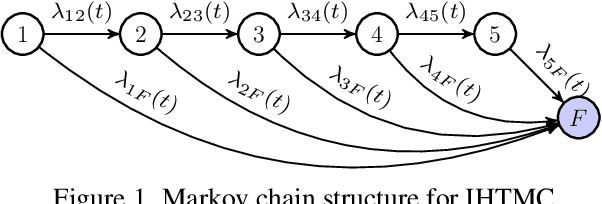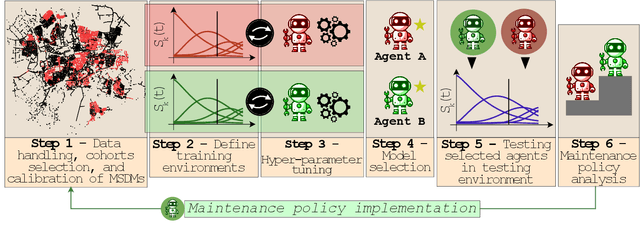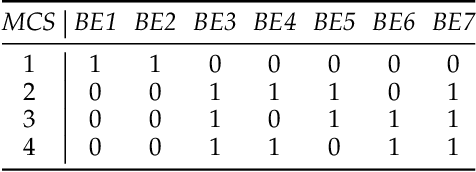Tiedo Tinga
A maturity framework for data driven maintenance
Jul 26, 2024Abstract:Maintenance decisions range from the simple detection of faults to ultimately predicting future failures and solving the problem. These traditionally human decisions are nowadays increasingly supported by data and the ultimate aim is to make them autonomous. This paper explores the challenges encountered in data driven maintenance, and proposes to consider four aspects in a maturity framework: data / decision maturity, the translation from the real world to data, the computability of decisions (using models) and the causality in the obtained relations. After a discussion of the theoretical concepts involved, the exploration continues by considering a practical fault detection and identification problem. Two approaches, i.e. experience based and model based, are compared and discussed in terms of the four aspects in the maturity framework. It is observed that both approaches yield the same decisions, but still differ in the assignment of causality. This confirms that a maturity assessment not only concerns the type of decision, but should also include the other proposed aspects.
* in Proceedings of the 8th European Conference of the Prognostics and Health Management Society 2024
Maintenance Strategies for Sewer Pipes with Multi-State Degradation and Deep Reinforcement Learning
Jul 17, 2024



Abstract:Large-scale infrastructure systems are crucial for societal welfare, and their effective management requires strategic forecasting and intervention methods that account for various complexities. Our study addresses two challenges within the Prognostics and Health Management (PHM) framework applied to sewer assets: modeling pipe degradation across severity levels and developing effective maintenance policies. We employ Multi-State Degradation Models (MSDM) to represent the stochastic degradation process in sewer pipes and use Deep Reinforcement Learning (DRL) to devise maintenance strategies. A case study of a Dutch sewer network exemplifies our methodology. Our findings demonstrate the model's effectiveness in generating intelligent, cost-saving maintenance strategies that surpass heuristics. It adapts its management strategy based on the pipe's age, opting for a passive approach for newer pipes and transitioning to active strategies for older ones to prevent failures and reduce costs. This research highlights DRL's potential in optimizing maintenance policies. Future research will aim improve the model by incorporating partial observability, exploring various reinforcement learning algorithms, and extending this methodology to comprehensive infrastructure management.
Automatic inference of fault tree models via multi-objective evolutionary algorithms
Apr 06, 2022



Abstract:Fault tree analysis is a well-known technique in reliability engineering and risk assessment, which supports decision-making processes and the management of complex systems. Traditionally, fault tree (FT) models are built manually together with domain experts, considered a time-consuming process prone to human errors. With Industry 4.0, there is an increasing availability of inspection and monitoring data, making techniques that enable knowledge extraction from large data sets relevant. Thus, our goal with this work is to propose a data-driven approach to infer efficient FT structures that achieve a complete representation of the failure mechanisms contained in the failure data set without human intervention. Our algorithm, the FT-MOEA, based on multi-objective evolutionary algorithms, enables the simultaneous optimization of different relevant metrics such as the FT size, the error computed based on the failure data set and the Minimal Cut Sets. Our results show that, for six case studies from the literature, our approach successfully achieved automatic, efficient, and consistent inference of the associated FT models. We also present the results of a parametric analysis that tests our algorithm for different relevant conditions that influence its performance, as well as an overview of the data-driven methods used to automatically infer FT models.
 Add to Chrome
Add to Chrome Add to Firefox
Add to Firefox Add to Edge
Add to Edge